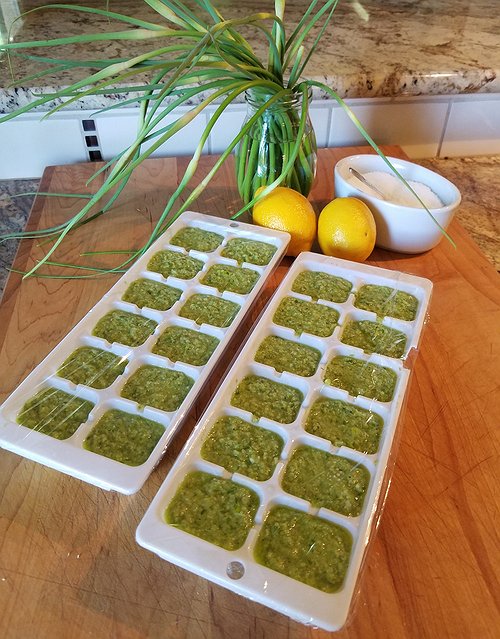Garlic lovers, rejoice; it’s scape season
Take a stroll through the Farmer’s Market now through the end of June and you’ll no doubt come across bunches of curlicue stems of hardneck garlic, known as scapes.
These twisting, Suess-like stalks are quite delicious and highly sought after by many chefs and garlic lovers.
What is a Garlic Scape?
A scape is the flowering stalk of the hardneck garlic plant (softneck varieties don’t produce a scape). The stiff stem begins to emerge from the center of the plant in early June, growing in a loop-de-loop fashion.
If the scape is left to mature on the plant, a head of tiny garlic seed, called bulbils, form. While the bulbils could be planted, it would take several years of growth before they will mature into sizeable garlics. If you are growing garlic and want to continue your crop, it’s more efficient to replant large cloves from your summer-harvested bulbs.
And in order to achieve a harvest of plump garlic bulbs in the summer, the scapes are cut or snapped from the hardneck plant when they begin to curl. Once removed, the plant will channel its energy into the bulb, instead of a seed head.
The garlic scape also signals that garlic harvesting time is coming. Depending on the variety, once scapes appear, you can anticipate harvesting garlic bulbs within 4 to 6 weeks. Hardneck garlic essentially produces two harvests from one plant: the tender scape in late spring and a juicy, fat bulb in mid-summer. What’s not to love about that?
Scrumptious Scapes
Scapes are a once-a-year culinary delight and can be used in any recipe that calls for garlic. While they are milder in flavor than raw garlic cloves, they still deliver a garlicky tang to dishes.
They resemble long beans and can be treated in very much the same way — sauteed with red bell peppers in a little olive oil. Yum! When chopped fine, they add a touch of garlic flavor to egg dishes and pizza. Use them fresh like you would scallions or chives for topping baked potatoes or deviled eggs.
My favorite way to use scapes is to make garlic scape pesto. It’s so simple to make and freezes extremely well. And, unlike pesto made with basil, scape pesto keeps it vibrant green color. I love it tossed in a big bowl of linguini.
Garlic Scape Pesto
• 10 to 12 garlic scapes
• 1/3 cup of pine nuts (almonds, walnuts, pistachios work too)
• 1/3 cup of Parmigiano-Reggiano cheese
• Kosher salt and fresh ground pepper to taste
• 1/3 cup of extra virgin olive oil
• Juice of 1/2 small lemon
Rough chop the scapes with a knife and put them, along with the nuts and cheese in a food processor. Pulse until blended, add salt and pepper and lemon juice. With the food processor running, drizzle in olive oil until blended and smooth.
Store in the refrigerator for up to five days or freeze. I often make a double batch and freeze one in ice cube trays or mini muffin tins. Once frozen, I pop the pesto into freezer bags for future use. When I need a little pesto, I just grab a cube or two.
Fresh scapes can be stored in the fridge, wrapped in damp paper towels for about a week. You can also chop and freeze fresh scapes for future use.
Next time you see these crazy looking stems at the market, pick up a bunch before they’re gone. You’ll be delighted by their versatility in the kitchen and as well as their spicy, garlicky flavor.
• • •
Candace Godwin is a certified Idaho Master Gardener and the owner of The Coeur d’Alene Coop (thecoeurdalenecoop.com), offering seasonal plant sales and advice on gardening and raising backyard chickens.











